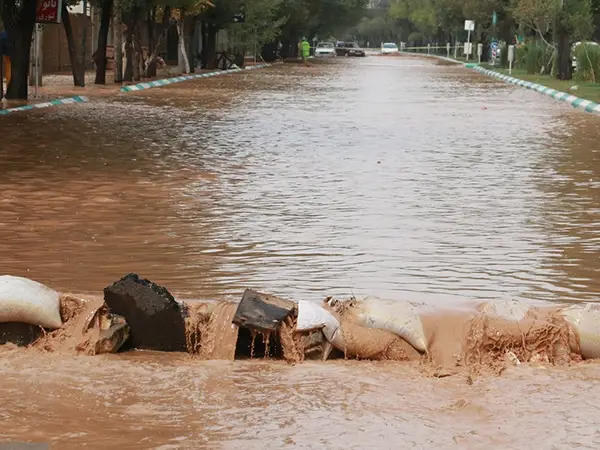Rare summer monsoon rains and floods in Iran have wreaked havoc in many provinces, with dozens dead or missing, amid the worst annual drought in recent memory.
According to official figures, as of Friday night, early Saturday, 56 people were confirmed killed in the floods, and at least 16 others missing. Nineteen of Iran’s 31 provinces, 38 cities and 106 towns are affected by heavy rains and floods.
Indian sub-continent summer monsoons usually bring some rain showers to Iran’s arid plateau, but every few decades the impact becomes more intense and causes flooding.
This week the storms spread throughout the arid regions. The central Yazd city, with an annual precipitation of just 4 centimeters, received 5 centimeters of rain from Thursday to Friday. There are videos showing centuries-old historic buildings destroyed or severely damaged in the province of Yazd. This perhaps is an indication of the unprecedented impact of the monsoon rains.
The video below shows historic buildings collapsing in Yazd province
Partly due to the arid nature of the land and partly because of neglect in urban planning, even a modestly strong storm leads to deadly floods in Iran. Many dry riverbeds are choked off with construction or debris dumped by residents, leading to sudden flash floods in places no one expected one.
This year some forecasts had said that the Indian monsoon will have above-average intensity, but why the impact has moved so far west of India, is not clear. What some experts say is that warmer temperatures and more dust storms in the Middle East can contribute to the intensification of monsoon conditions over the Indian ocean. Western parts of Pakistan near Iran were hit hard in June and early July with dozens of people dying in floods.
The last time a very strong Indian or South Asia monsoon hit Iran was in 1956, with devastating floods.
Areas in and around Iran’s capital, Tehran experienced flash floods on Thursday and Friday with more than 20 killed and large mud slides covering densely populated urban parts of the 15-million Greater Tehran region. Authorities warn of more rains until Sunday, July 31.
Officials in the northern Caspian Sea region on Friday spoke of three “foreigners” killed in floods and 8 missing, but did not mention their nationalities. The Caspian coast, which has a subtropical climate and forested hills is a popular destination for Iranian tourists and occasionally foreigners.
Before the storms, Iran was experiencing its most arid year, with extremely high temperatures in the south, at times nearing 50 degrees Celsius or more than 120 Fahrenheit, with heavy dust pollution. Deaths were reported from the high temperatures and dust storms.
Precipitation was at least 30 percent less than last year, which itself was a drought period. Water reservoirs behind major dams were down by an average of 70 percent from their top capacity. The destructive monsoon rains will partly alleviate the water shortage, but it is not clear how much of the water will end up behind dams.
